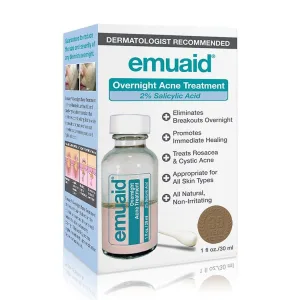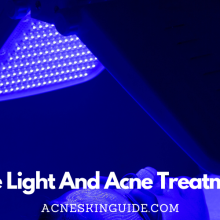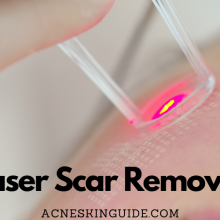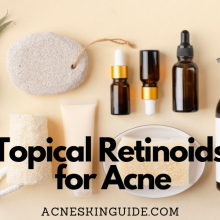How To Get Rid of Back Acne | AcneSkinGuide
Summary of Answering How To Get Rid of Back Acne
Back acne, or “bacne,” is a common and frustrating condition caused by clogged pores, excessive sweating, tight clothing, hair products, friction, and hormonal imbalances. Treatment options include over-the-counter topical products with benzoyl peroxide or salicylic acid, prescription oral medications like antibiotics, natural remedies like tea tree oil, and professional treatments like chemical peels or laser therapy. Prevention involves showering after sweating, wearing breathable fabrics, avoiding pore-clogging products, cleansing and exfoliating, and protecting with non-comedogenic sunscreen.
For lingering scars, over-the-counter scar treatments, laser therapy, or home remedies like vitamin E oil can help fade their appearance. Additional tips include using back applicators, changing bedding frequently, and avoiding friction from tight clothes or gear. A multi-pronged approach with effective treatments, lifestyle adjustments, and consistent skincare is key for clearing and preventing recurrent back acne breakouts.
Our Top 3 Recommended Acne Treatment Products

#1 Paula's Choice Acne Treatment
The 3-step kit features a cleanser and exfoliating solution with 2% salicylic acid, as well as a 5% benzoyl peroxide treatment that effectively treats even severe acne, though the benzoyl peroxide can be drying. The kit delivers serious results for stubborn acne, despite its slightly higher price point compared to drugstore options. Check The Price Now

#2 EMUAID Overnight Acne Treatment
The EMUAID Overnight Acne Treatment features a two-phase solution, with an exfoliating first step to unclog pores and an intensive treatment gel that rapidly reduces inflammation, redness, and swelling of even severe, cystic breakouts, despite a slightly medicinal scent and higher price point compared to other options. Check The Price Now

#3 Differin Acne Treatment
The Differin 0.1% adapalene gel normalizes cell turnover and unclogs pores to effectively treat acne, though it requires 2-3 months of consistent use with an adjustment period of dryness and purging before seeing maximum results, which are worth the effort for clearer, more even-toned skin. Check The Price Now

Dealing with Back Acne? Here’s How to Get Rid of It
Back acne, often referred to as “bacne,” is a frustrating and embarrassing condition that affects countless individuals. While acne on the face is more commonly discussed, bacne can be just as stubborn and difficult to treat. However, with the right approach and a combination of effective strategies, it is possible to get rid of back acne and achieve clear, smooth skin.
Understanding Back Acne
Before diving into treatment options, it’s essential to understand the different types of back acne and their causes. Blackheads (open comedones) and whiteheads (closed comedones) are non-inflammatory forms of acne caused by clogged pores. Papules, pustules, and cystic acne are inflammatory forms that can be more severe and lead to scarring if left untreated.
Back acne can be triggered by various factors, including excessive sweating, tight clothing that rubs against the skin, use of certain hair products that clog pores, friction from backpacks or sports equipment, and hormonal imbalances. Additionally, diet and nutrition play a significant role, as foods high in sugar, dairy, and processed ingredients may exacerbate acne, while a diet rich in antioxidants and healthy fats may help reduce inflammation and breakouts.
Treatment Options
- Topical Treatments
The first line of defense against back acne is topical treatments. Over-the-counter products containing benzoyl peroxide or salicylic acid can be effective in killing acne-causing bacteria and unclogging pores. Back acne brushes and washes can also help exfoliate and clean hard-to-reach areas.
Potential Downside: Some individuals may experience dryness, peeling, or irritation when using topical acne treatments, especially those with sensitive skin.
- Oral Medications
For severe or persistent cases of back acne, a dermatologist may prescribe oral medications such as antibiotics or isotretinoin (Accutane). These medications can help reduce inflammation and prevent future breakouts.
Potential Downside: Oral medications may cause side effects such as dry skin, headaches, and digestive issues. Isotretinoin, in particular, requires close monitoring due to potential severe side effects.
- Natural Remedies
Natural remedies like tea tree oil, apple cider vinegar, honey, oatmeal, and aloe vera can be effective in treating back acne due to their antimicrobial, anti-inflammatory, and soothing properties.
Potential Downside: While generally considered safe, some individuals may experience allergic reactions or irritation from certain natural remedies.
- Professional Treatments
For stubborn cases of back acne, professional treatments such as chemical peels, laser therapy, or extraction by a dermatologist may be recommended to remove deeply rooted blackheads or cysts.
Potential Downside: Professional treatments can be expensive and may require multiple sessions. There is also a risk of side effects, such as temporary redness, swelling, or scarring.
Prevention and Skincare Routine
- Showering Regularly
Showering immediately after sweating is crucial to prevent sweat and bacteria from clogging pores and causing breakouts on the back. - Clothing Choices
Wearing loose, breathable clothing made of natural fibers like cotton can help reduce friction and allow the skin to breathe, preventing acne flare-ups. - Avoiding Pore-Clogging Products
Avoiding hair products that contain heavy oils or greasy ingredients is important, as these can transfer to the back and clog pores. - Cleansing and Exfoliating
Cleansing the back thoroughly with a gentle, non-comedogenic cleanser and regularly exfoliating with a gentle scrub or brush can help remove excess oil, dead skin cells, and other debris that can contribute to back acne. - Moisturizing and Sun Protection
Moisturizing with a non-comedogenic, oil-free moisturizer can keep the skin hydrated without clogging pores. Sun protection is also crucial for preventing further inflammation and hyperpigmentation, so using a non-comedogenic, oil-free sunscreen specifically formulated for acne-prone skin is recommended.
Scar Treatment
If back acne has left behind scars, there are several options to help improve their appearance:
- Over-the-Counter Scar Treatments
Look for products containing ingredients like vitamin C, retinol, or alpha hydroxy acids, which can help fade acne scars over time. - Professional Treatments
Laser therapy or chemical peels administered by a dermatologist can be effective in reducing the appearance of severe acne scars. - Home Remedies
Home remedies like vitamin E oil, aloe vera gel, and cocoa butter can help soothe and hydrate scarred skin, potentially improving its appearance.
Potential Downside: Scar treatment can be a lengthy process, and some scars may not completely fade, even with consistent treatment.
Additional Tips and Tricks
- Showering immediately after workouts or any activity that causes excessive sweating can help prevent sweat and bacteria from clogging pores and causing breakouts.
- Using a back applicator or long-handled brush can make it easier to apply acne treatments and cleansers to hard-to-reach areas of the back.
- Changing sheets and pillowcases regularly can help prevent the transfer of oil, dirt, and bacteria from surfaces to the skin, reducing the risk of breakouts.
- Dealing with acne mechanica, or friction-induced acne, is important. Avoiding tight or abrasive clothing and using protective pads for backpacks or sports equipment can help reduce irritation and prevent acne from forming.
Conclusion
Treating back acne requires a multi-faceted approach that addresses the root causes, incorporates effective treatments, and implements preventative measures. While it may take patience and consistency, with the right combination of treatments, lifestyle changes, and skincare routine, it is possible to get rid of back acne and prevent future breakouts. If you’re struggling with severe or persistent back acne, it’s always best to consult a dermatologist for professional guidance and treatment.
FAQs and Answers
How can I treat back acne during pregnancy?
- Use topical products with pregnancy-safe ingredients: Look for over-the-counter acne products that contain glycolic acid, azelaic acid, or benzoyl peroxide (in low concentrations). These ingredients are generally considered safe for use during pregnancy. Avoid products with salicylic acid, retinoids, or other potentially harsh ingredients.
- Try natural remedies: Pregnancy-safe natural remedies for back acne include tea tree oil, honey, oatmeal, and aloe vera. These can help soothe inflammation and fight acne-causing bacteria without risking harm to the developing baby.
- Exfoliate gently: Use a soft brush or cloth to gently exfoliate the back and remove dead skin cells that could clog pores. Avoid scrubbing too vigorously, which can irritate the skin.
- Wear loose, breathable clothing: Tight clothing can trap sweat and bacteria against the skin, leading to breakouts. Opt for loose-fitting, cotton clothing to help keep the back dry and allow it to breathe.
- Consult a dermatologist: If over-the-counter treatments aren’t working, consider seeing a dermatologist for pregnancy-safe prescription options. Some oral antibiotics or other medications may be deemed safe during certain trimesters.
- Practice stress management: Hormonal fluctuations and increased stress during pregnancy can trigger or worsen acne. Try relaxation techniques like prenatal yoga, meditation, or getting enough rest.
- Be patient and consistent: Acne during pregnancy may be stubborn, so it’s important to be patient and consistent with your treatment regimen. Avoid anything too harsh or drying, as your skin may be more sensitive.
The key is finding a balance between treating acne and using only pregnancy-safe products. Always consult your doctor before trying new acne treatments while pregnant.
Can certain types of exercise or sports gear contribute to back acne?
Yes, certain types of exercise and sports gear can contribute to back acne, a condition sometimes referred to as “acne mechanica.” Here are some examples:
- Tight workout clothes: Form-fitting activewear like compression shirts, leggings, and sports bras can trap sweat and bacteria against the skin, clogging pores and leading to breakouts on the back.
- Heavy backpacks or gear: The friction and pressure from carrying heavy backpacks, sports bags, or equipment on the back can irritate the skin, rupture existing blemishes, and cause new acne lesions to form.
- Helmets and protective gear: Headgear like football helmets, baseball caps, and other protective gear that rests against the back or shoulders can rub against the skin and lead to acne mechanica.
- Sweaty workout equipment: Exercise machines, mats, and other surfaces that come into contact with the back during sweaty workouts can transfer acne-causing bacteria, oils, and dirt to the skin.
- Pool chlorine: For swimmers, frequent exposure to chlorine in pools can dry out and irritate the skin on the back, potentially worsening acne breakouts.
To minimize exercise and sports gear-induced back acne, it’s important to shower immediately after sweating, wear loose-fitting, breathable fabrics, and clean sports equipment regularly. Using a clean towel or clothing as a barrier between skin and surfaces can also help reduce friction. If back acne persists, consulting a dermatologist may be necessary to identify contributing factors and develop an effective treatment plan.
How can I cover up back acne for special events or occasions?
Covering up back acne for special events or occasions can be challenging, but there are a few options to help conceal breakouts:
- Use a tinted acne treatment or body makeup:
Look for tinted acne treatments or green-tinted body makeup designed specifically to cover blemishes. Apply with a makeup sponge or brush for best coverage. Be cautious with heavy liquid foundations, as they can clog pores further. - Try an airbrush tan or tinted moisturizer:
Getting a light airbrush tan or using a tinted moisturizer can help even out skin tone and slightly camouflage breakouts on the back. Avoid heavy, orange-tinted products that can draw more attention. - Use colored concealer or color-correcting products:
Green-tinted color correctors can help neutralize the redness of inflammatory acne before applying regular concealer or body makeup on top. Use sparingly and blend well. - Consider back makeup from the pros:
Professional makeup artists often offer back and body makeup services for special events like weddings. This professional airbrushing technique can provide full coverage. - Opt for strategic clothing choices:
Wear clothing that reveals less back skin, like dresses or tops with higher back necklines. Shawls, wraps, or jackets can also help conceal the back when needed. - Be confident and embrace your skin:
While concealing acne is an option, don’t feel ashamed of your back’s appearance. Confidence and a positive attitude can overshadow any perceived flaws.
Remember, no matter how well you cover up, avoid heavy, pore-clogging makeup that could worsen acne long-term. And be prepared to touch up coverage periodically throughout an event.
Are there any specific dietary supplements that can help clear back acne?
Yes, there are several dietary supplements that may help clear up back acne when used in combination with other treatments:
- Zinc:
Zinc is an essential mineral that plays a role in wound healing and has anti-inflammatory properties. It may help reduce acne by regulating oil production and decreasing bacterial growth. Look for zinc gluconate or zinc picolinate supplements. - Probiotics:
Probiotics are beneficial bacteria that can help balance the gut microbiome and reduce inflammation throughout the body, including the skin. Some studies suggest probiotics may improve acne. - Omega-3 fatty acids:
Omega-3s from supplements like fish oil or flaxseed oil have anti-inflammatory effects that could help minimize acne inflammation and promote overall skin health. - Vitamin D:
Many individuals are deficient in vitamin D, which may contribute to acne. Vitamin D supplements may help regulate skin cell growth and reduce acne lesions. - Green tea extract:
Green tea is high in antioxidants that can help fight inflammation and bacterial growth associated with acne. - Guggul extract:
This plant extract from the guggul tree shows promise in treating acne due to its anti-inflammatory and hormone-regulating properties.
It’s important to note that while these supplements may provide added benefits, they should not replace standard back acne treatments prescribed by a dermatologist. Always check with a doctor before starting any new supplement, especially if you have existing health conditions or take medications. Be patient, as it can take 8-12 weeks to see improvements when using dietary supplements for acne.
How can I prevent back acne from recurring after clearing it?
Here are some tips to help prevent back acne from recurring after clearing it:
- Maintain a consistent skincare routine:
Even after your back clears up, continue using the acne-fighting products (cleansers, treatments, etc.) that worked for you, but perhaps less frequently. This helps keep pores clear and prevents new breakouts. - Exfoliate regularly:
Gently exfoliating 1-2 times per week will slough off dead skin cells that can clog pores and lead to new blemishes. Use a soft brush, loofah, or chemical exfoliant formulated for the body. - Watch for pore-clogging products:
Avoid hair products, lotions, or creams with heavy oils or butters that could transfer to your back and clog pores. Stick to oil-free, non-comedogenic formulas. - Manage stress:
High stress can trigger hormone fluctuations that increase oil production and inflammatory responses that cause acne flare-ups. Practice stress relief techniques. - Stay hydrated:
Drink plenty of water to aid skin health and flush out toxins and bacterial buildup that could re-trigger back acne. - Exercise regularly:
Sweat can clog pores, so shower immediately after workouts using a body wash to remove dirt, oil, and bacteria from skin. - Consider dietary changes:
For some, foods like dairy, high-glycemic carbs, and processed items may contribute to recurring acne. An anti-inflammatory diet might help. - Use breathable fabrics:
Tight, non-breathable clothing traps sweat and bacterial against skin. Choose loose, moisture-wicking exercise attire and fabrics like cotton. - See a dermatologist:
If acne keeps returning, a dermatologist can provide stronger medications or treatments to better control it long-term.
Consistency is key when trying to prevent back acne recurrence. Be diligent about your skincare, lifestyle, and any prescribed treatments.






